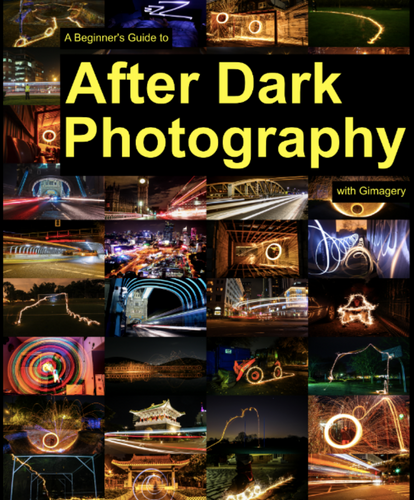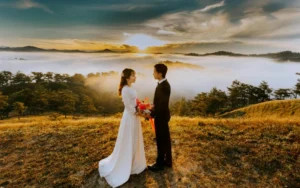Wildlife photography is an exciting and challenging genre of photography that involves capturing images of animals in their natural habitat. It requires a combination of technical skill, patience, and knowledge of the subject to capture compelling and memorable images.
In this article, we will discuss some essential wildlife photography tips. Whether you’re a beginner or an experienced photographer, these tips will help you improve your skills and capture stunning images of animals in their natural habitat.
Table of Contents
Tip #2: Use the right equipment
Tip #3: Choose the right time of the day
Tip #5: Be prepared for elements
Tip #6: Use the right camera settings
Tip #1: Know your subject
One of the most important wildlife photography tips is to know your subject. This means understanding their behavior, habitat, and movement patterns. The more you know about the animal, the better prepared you will be to capture the perfect shot.
Researching your subject is a crucial step in understanding their behavior and patterns. You can start by reading books or articles about the animal, watching documentaries, or talking to experts in the field.

Source: https://www.pexels.com/photo/a-mob-of-meerkats-9450969/
Let’s say you’re planning to photograph a family of meerkats. By researching their behavior, you’ll know that meerkats are social animals that live in underground burrows. They are active during the day, especially in the morning and late afternoon. They often stand upright on their hind legs to scan their surroundings for predators. Knowing these facts will help you anticipate their movements and behaviors and be in the right place at the right time to capture the perfect shot.
Tip #2: Use the right equipment
Wildlife photography requires specialized equipment to capture high-quality images. The most important equipment you need is a good camera and lens. A camera with a fast autofocus system and high burst rate is essential for capturing fast-moving animals like birds of prey in flight.
A telephoto lens with a long focal length is necessary to capture the animals from a safe distance. A 300mm or 400mm lens is an excellent starting point, but you may need a longer lens for larger animals or to capture images from a greater distance.
Other essential equipment includes a sturdy tripod or monopod, a comfortable camera bag to carry your gear, and a polarizing filter to reduce glare and reflections.
Tip #3: Choose the right time of the day
The time of day you choose to photograph wildlife can significantly impact the quality of your images. The best time to photograph wildlife is during the golden hour, which is the hour after sunrise and the hour before sunset. During this time, the light is soft and warm, creating beautiful and dramatic images.

Source: https://www.pexels.com/photo/a-flying-birds-during-golden-hour-15256510/
If you are photographing nocturnal animals, you will need to shoot during the evening or early morning hours. You may also need to use a flash or other lighting equipment to capture clear images in low-light conditions for beautiful clicks.
Tip #4: Patience is key
Wildlife photography requires a lot of patience. Animals can be unpredictable, and it may take hours or even days to capture the perfect shot. It’s essential to stay calm and focused, even if you are not getting the results you want.
One of the best ways to increase your chances of capturing great wildlife images is to be patient and observe the animals’ behavior. Try to anticipate their movements and reactions and be ready to capture the perfect shot when it presents itself.

Source: https://www.pexels.com/photo/sea-otters-in-the-water-9848212/
Let’s say you’re trying to photograph a group of playful otters in a river. Otters are fast and unpredictable, and it may take a while to capture the perfect shot. By staying calm and patient, you’ll be able to observe their behavior and anticipate their movements. Eventually, you’ll be able to capture the perfect shot of the otters playing and swimming in the river.
Tip #5: Be prepared for elements
Wildlife photography often involves spending long hours outdoors in harsh weather conditions. It’s important to be prepared for the elements to stay comfortable and safe while you work. Wear comfortable, layered clothing that will keep you warm and dry in cold or wet conditions.
Bring sunscreen, a hat to provide shade and protect your face and neck from the sun, and insect repellent to keep the mosquitoes and other pests at bay. Don’t forget to bring plenty of water and snacks to stay hydrated and fueled throughout the day.

Source: https://www.pexels.com/photo/herd-of-elephants-in-savanna-4577129/
Suppose you’re planning to photograph a herd of elephants in the African savanna. To stay comfortable and safe in the hot, dry climate, you’ll need to wear lightweight, breathable clothing that will protect you from the scorching heat of the sun.
Tip #6: Use the right camera settings
Using the right camera settings is one of the essential wildlife photography tips to capture high-quality images. The most important settings to consider are aperture, shutter speed, and ISO.
Aperture: The aperture controls the amount of light that enters the lens and determines the depth of field. A wider aperture (smaller f-number) will create a shallow depth of field, blurring the background and isolating the subject. A narrower aperture (larger f-number) will create a larger depth of field, keeping more of the scene in focus.
Shutter speed: The shutter speed controls the length of time the camera’s sensor is exposed to light.
ISO: ISO is most often thought to impact brightness or exposure. A lower ISO number results in a darker shot since it is less sensitive to light. Although a higher ISO makes your image brighter and more sensitive to light. The optimal ISO setting for a wildlife photography shoot is often mid-range, between 400-800.

Source: https://www.pexels.com/photo/five-zebra-grazing-on-grass-field-2862070/
Suppose you’re photographing a group of zebras grazing in a grassy field. You’ll need to use a wide aperture to capture sharp images with a blurred background. A fast shutter speed (1/1000s or faster) will freeze the movement of the zebras, and a low ISO (100-400) will ensure the image is not too noisy. By adjusting your camera settings, you’ll be able to capture a lovely image of the zebras in their natural habitat.
With this, we have come to the end of this article. We’ve tried our best to cover all the essential wildlife photography tips that one must keep in mind to excel at photographing wildlife.
If you want further guidance and secrets to wildlife photography, don’t forget to check out Ultimate Guide to Field Photography and Free Webinar on Outdoor & Nature Photography by Charlie Borland.
Did you find this blog insightful? Don’t hesitate to reach out to us for your suggestions, thoughts, reviews, and feedback.
And for more of such great content, check out our BLOG PAGE!














